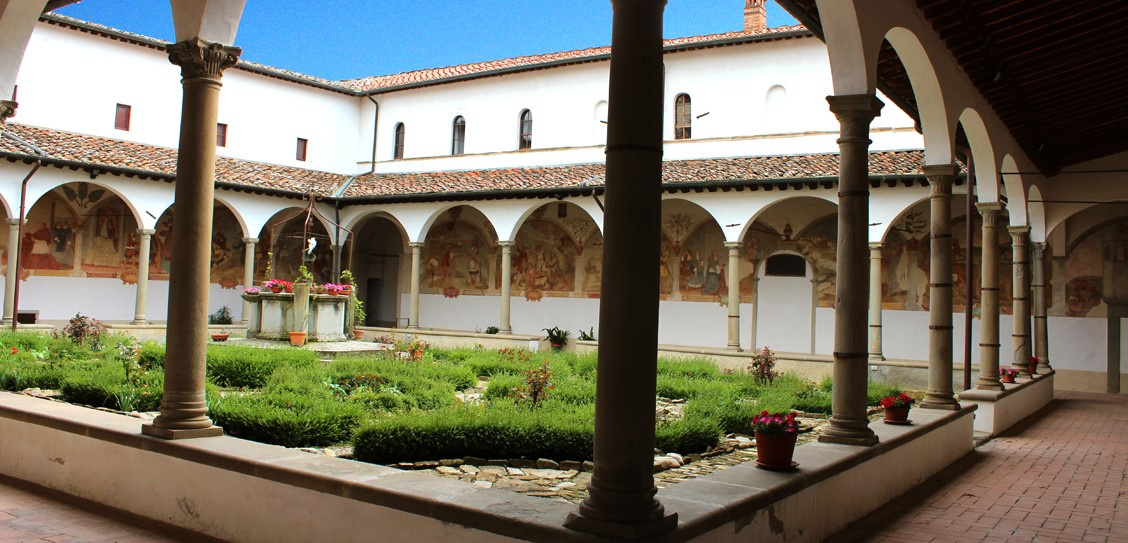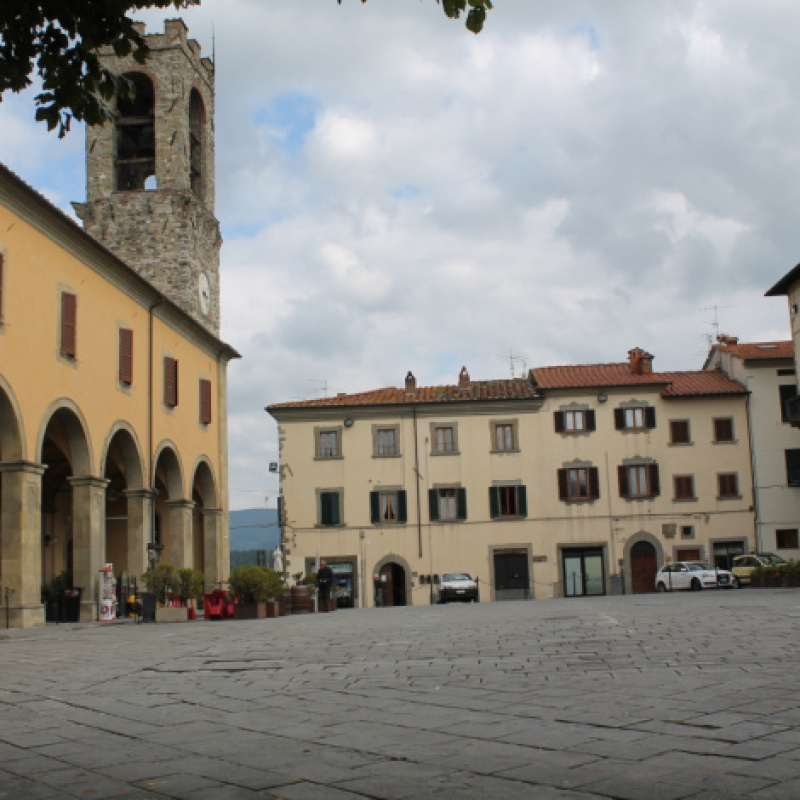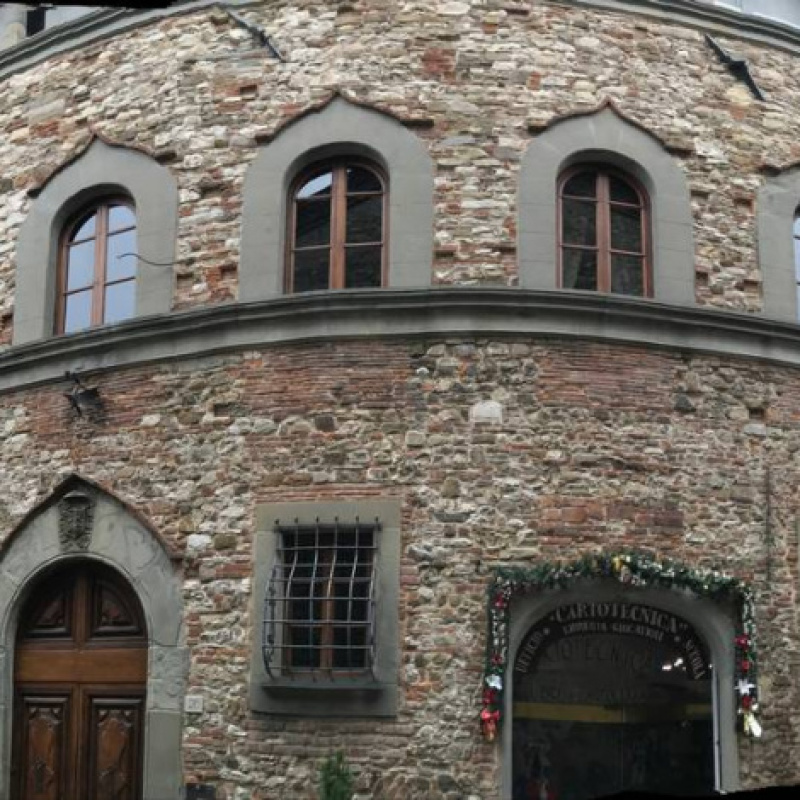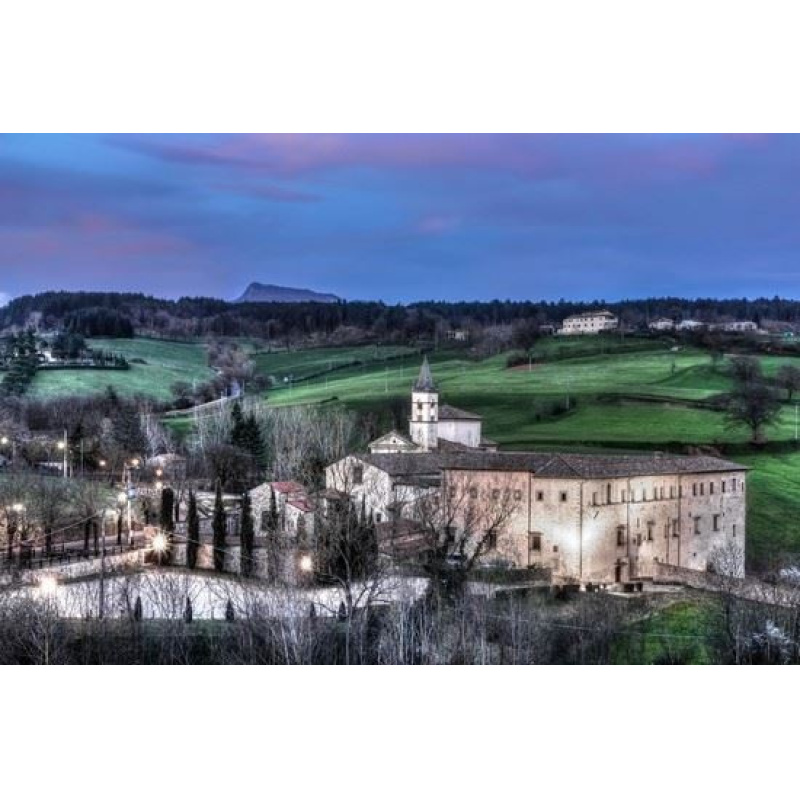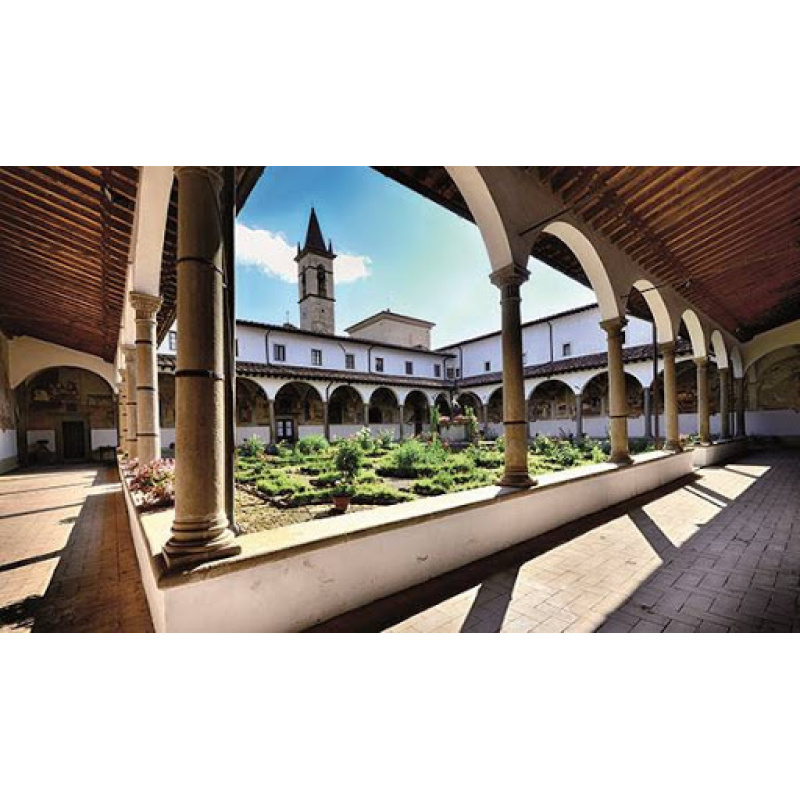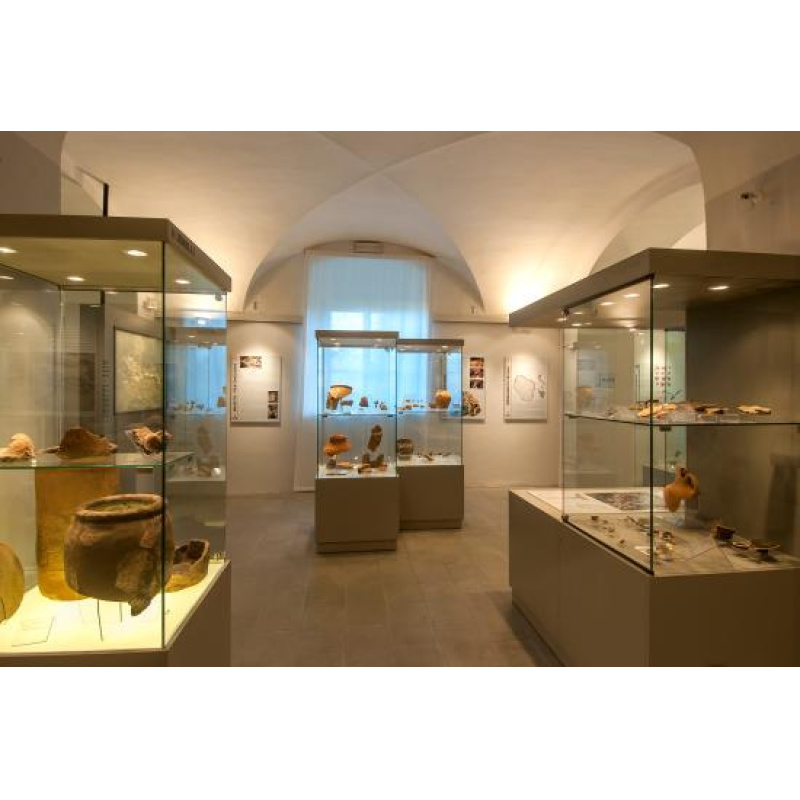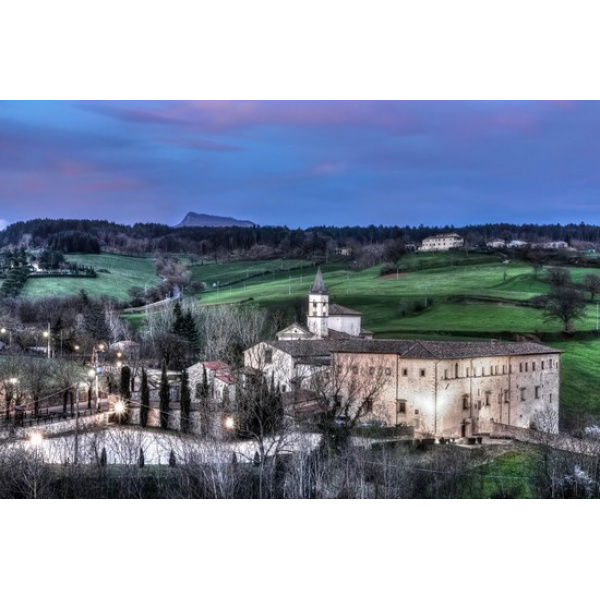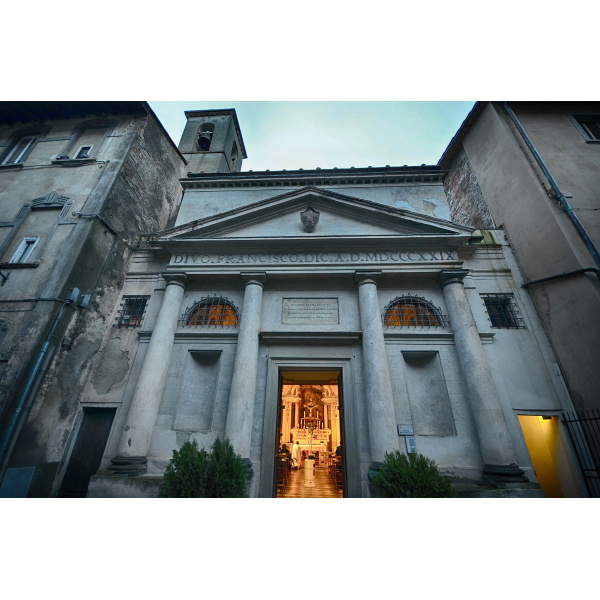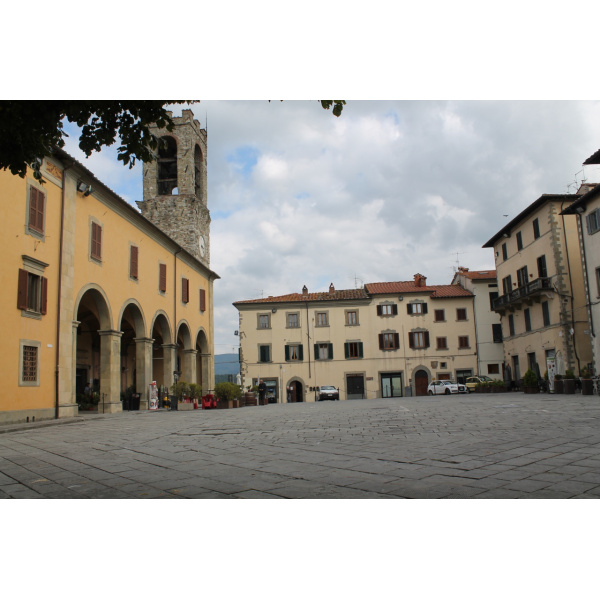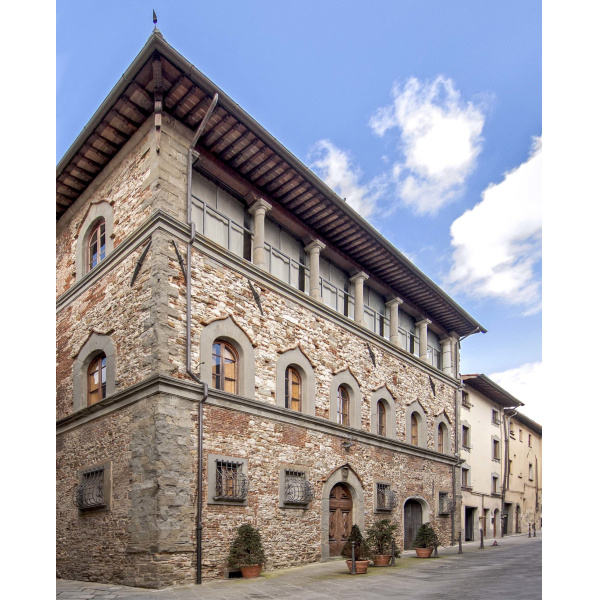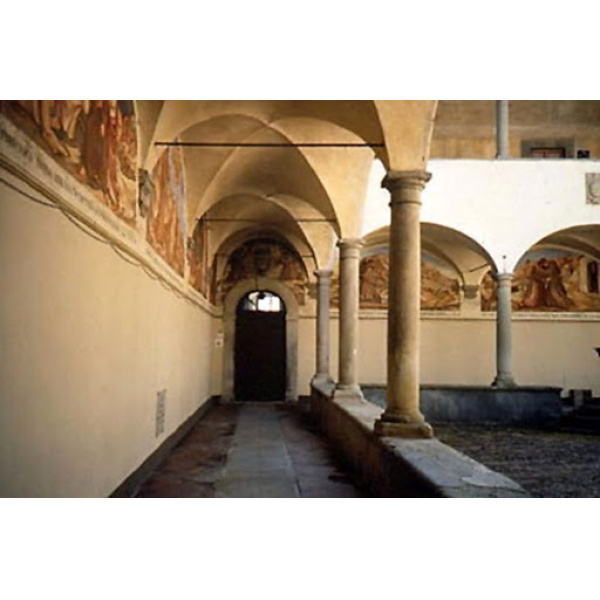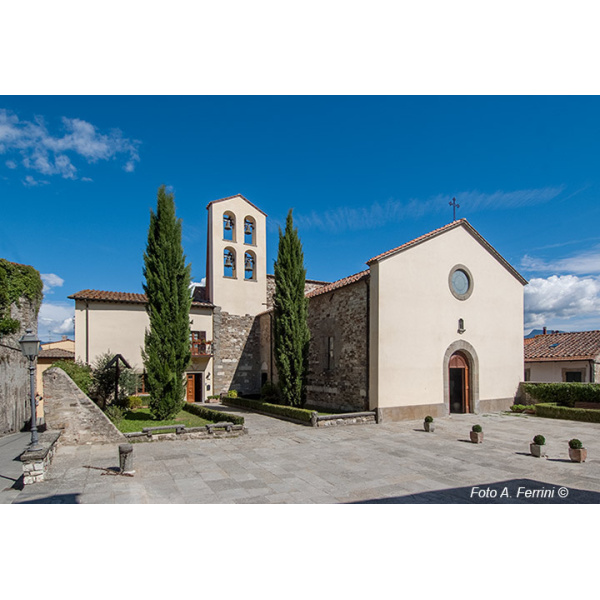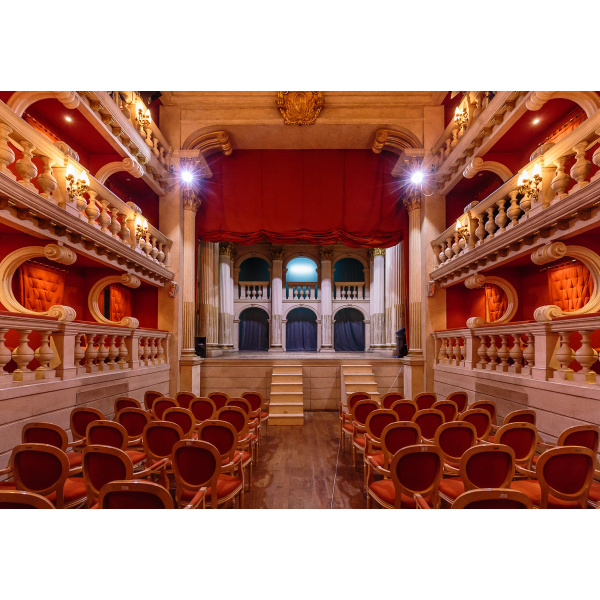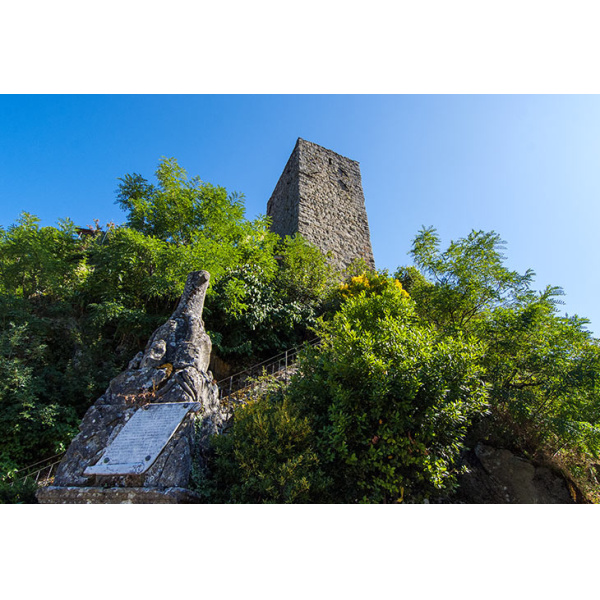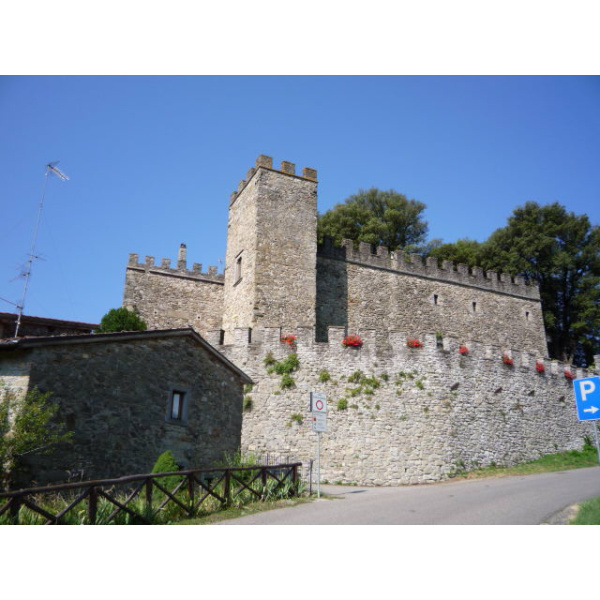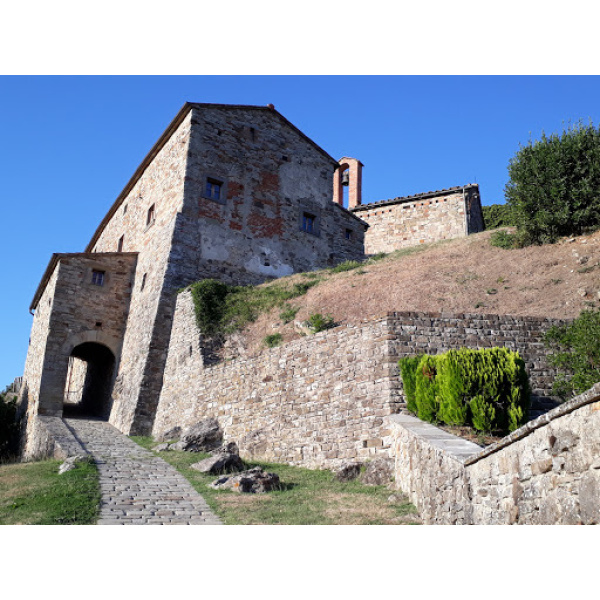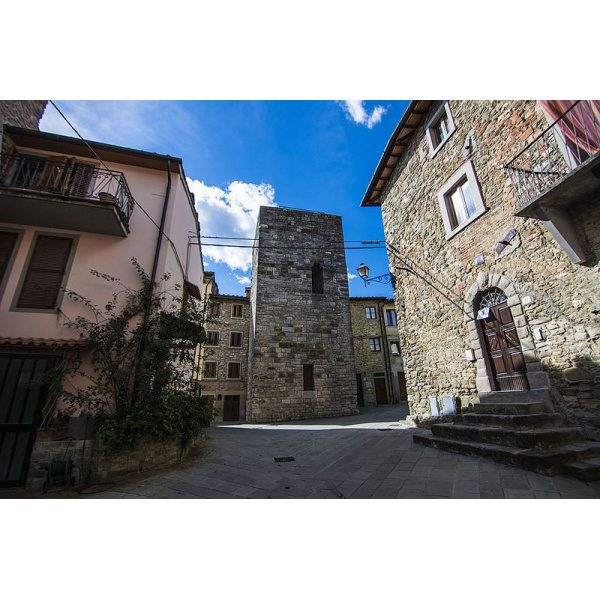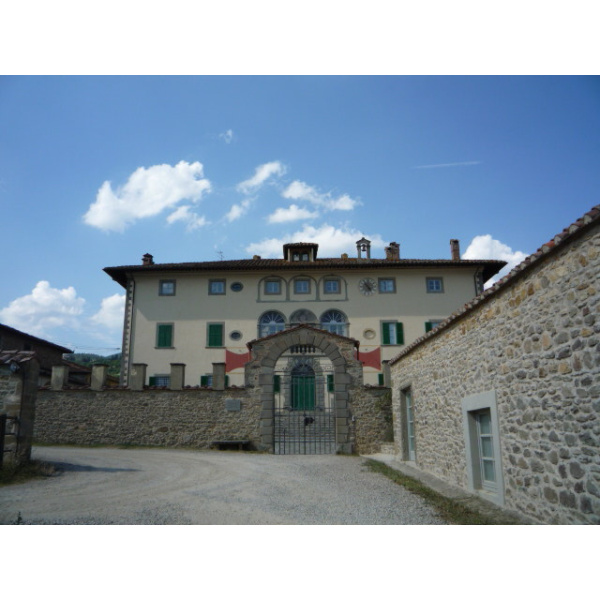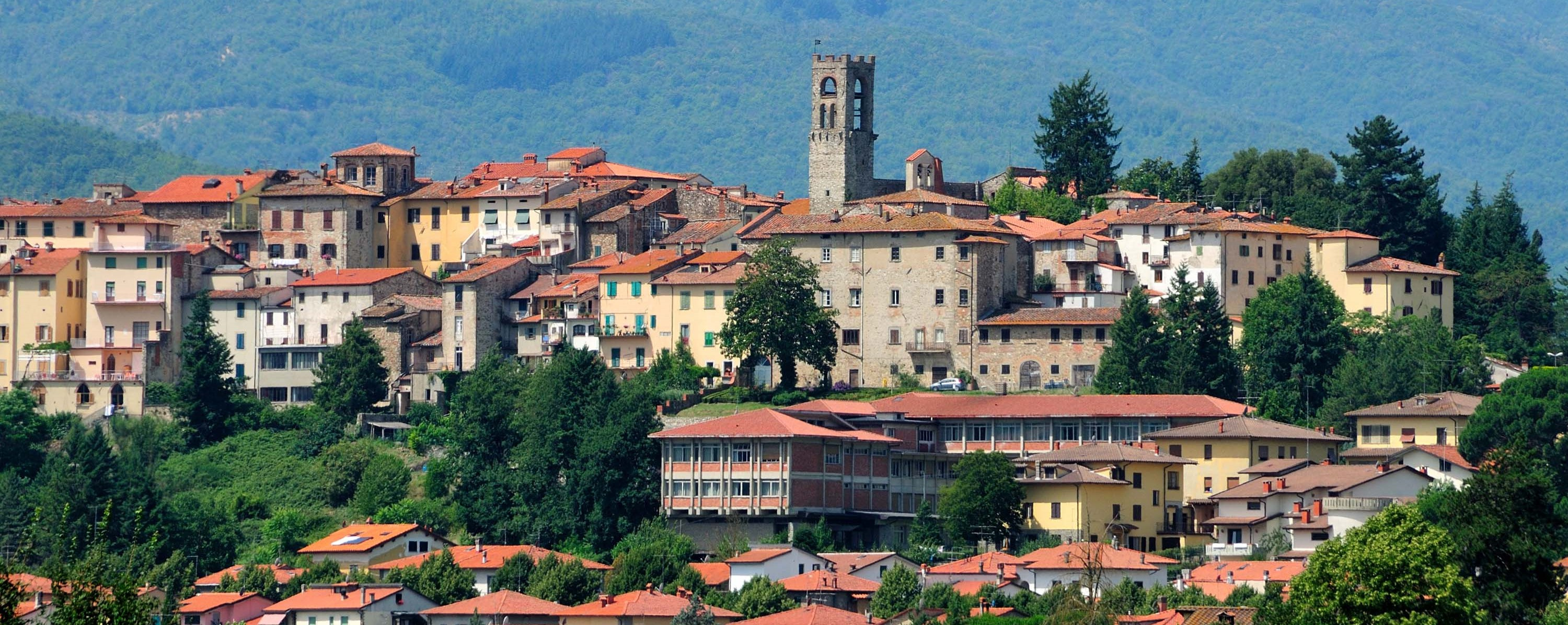Bibbiena
Bibbiena, centro principale del Casentino, vanta tracce di storia etrusca e romana nel suo territorio. Tuttavia, è tra il X e l'XI secolo che la città si sviluppò e assunse l'aspetto di un borgo fortificato, voluto dai vescovi di Arezzo come avamposto nelle terre dominate dai Conti Guidi. Fedele alla città ghibellina di Arezzo, dopo la Battaglia di Campaldino dell'11 giugno 1289, Bibbiena subì gravi danni per mano dei guelfi fiorentini, che la assediarono e saccheggiarono per otto giorni, secondo le cronache. Nel Trecento, dopo la ricostruzione, divenne uno dei castelli più importanti e strategici dei Tarlati da Pietramala, finché cadde sotto il controllo di Firenze nel 1384, insieme a tutto il territorio controllato da Arezzo. Nel 1440 subì una nuova devastazione per mano delle truppe di Niccolò Piccinino, al soldo dei Visconti di Milano. Nel 1509, i fiorentini decisero di smantellare le mura ormai inutilizzate, di cui oggi rimangono pochi resti. La Torre dell'Orologio in Piazza Tarlati e la vicina Porta dei Fabbri ricordano il glorioso periodo medievale di Bibbiena, mentre il resto degli edifici principali, come Palazzo Dovizi, vennero eretti a partire dal Cinquecento, un secolo di rinascita per la città. A Palazzo Niccolini si trova la sede comunale e il Museo Archeologico del Casentino "Piero Albertoni", che ripercorre la storia della valle attraverso reperti dalla Preistoria al Medioevo. Tra gli edifici religiosi, la Propositura dei SS. Ippolito e Donato è la principale chiesa del centro storico, costruita sul luogo della cappella del castello tarlatesco consacrata nel 1314. Al suo interno sono conservate opere importanti che vanno dal XIII al XVII secolo. In via Berni si trova l'Oratorio di San Francesco, costruito in stile barocco dalla Compagnia delle Sacre Stimmate a partire dal 1736. In via Dovizi si trova la Chiesa di San Lorenzo, con l'adiacente convento quattrocentesco omonimo. Il Santuario di Santa Maria del Sasso, a un chilometro da Bibbiena, sorge sul luogo di un'apparizione della Madonna a una bambina il 23 giugno 1347. L'edificio rinascimentale, progettato da Giuliano da Maiano a partire dal 1486, è ricco di opere d'arte. Nella cripta si trova il masso legato al miracolo. Nel territorio bibbienese, molti luoghi meritano di essere visitati. A Contra si trova la Chiesa di San Giorgio documentata dall'XI secolo. A Gressa è possibile ammirare il castello appartenuto fin dall'XI secolo ai vescovi di Arezzo, che include anche la Chiesa di San Jacopo. A Terrossola, la Chiesa di San Matteo e San Bartolomeo custodisce una "Sacra conversazione" di Bernardo di Stefano Rosselli del 1497. Soci è il principale centro produttivo bibbienese, sviluppatosi dopo l'apertura nel 1848 di un grande lanificio. In origine, ospitava un castello medievale già presente agli inizi dell'XI secolo, di cui rimane una torre. La vicina Villa La Mausolea è una delle dimore più famose del Casentino, costruita dai monaci camaldolesi tra il 1494 e il 1496 come rifugio per i pellegrini o per i monaci anziani. A metà Seicento venne distrutta e poi ricostruita nel 1682. Proseguendo verso il Passo dei Mandrioli e la Romagna si giunge a Partina, dove si ammirano il castello dell'XI secolo, ricostruito in stile neomedievale nel Novecento, la Chiesa di San Biagio, nata come oratorio ma elevata a pieve nel corso del Settecento, e i resti dell'antica Pieve di Santa Maria Assunta, documentata dal 1005 e ricordata come una delle pievi casentinesi più importanti. Eretta al posto di una chiesa di origine longobarda, che a sua volta sorgeva sui resti di una domus romana, perse il suo titolo nel Settecento e venne sconsacrata. Oggi è inglobata in una colonica.
Categoria: Luoghi / Place To Visit
Bibbiena English version
Bibbiena, the main center of Casentino, boasts traces of Etruscan and Roman history in its territory. However, it was between the 10th and 11th centuries that the city developed and took on the appearance of a fortified village, commissioned by the bishops of Arezzo as an outpost in the lands dominated by the Guidi Counts. Loyal to Ghibelline Arezzo, after the Battle of Campaldino on June 11, 1289, Bibbiena suffered heavy damage from the Florentine Guelphs, who besieged and plundered it for eight days, according to historical records.
In the 14th century, after reconstruction, it became one of the most important and strategic castles of the Tarlati da Pietramala until it fell under Florence's control in 1384, along with the entire territory controlled by Arezzo. In 1440, it underwent a new devastation at the hands of Niccolò Piccinino's troops, in the pay of the Visconti of Milan. In 1509, the Florentines decided to dismantle the now useless walls, of which few remains are visible today.
The Clock Tower in Piazza Tarlati and the nearby Porta dei Fabbri evoke the glorious medieval period of Bibbiena, while the other main buildings, such as Palazzo Dovizi, were erected from the 16th century, a century of revival for the city. Palazzo Niccolini houses the municipal headquarters and the Archaeological Museum of Casentino "Piero Albertoni," which traces the history of the valley through artifacts from the Prehistoric to the Medieval period.
Among the religious buildings, the Propositura dei SS. Ippolito e Donato is the main church in the historic center, built on the site of the Tarlati castle chapel consecrated in 1314. Inside, important works from the 13th to the 17th century are preserved. On Via Berni, there is the Oratory of San Francesco, built in Baroque style by the Company of the Sacred Stigmata from 1736. On Via Dovizi, there is the Church of San Lorenzo, with its adjacent fifteenth-century convent.
The Sanctuary of Santa Maria del Sasso, one kilometer from Bibbiena, stands on the site where the Madonna appeared to a girl on June 23, 1347. The Renaissance building, rich in artworks, was designed by Giuliano da Maiano starting from 1486. The rock linked to the miracle is located in the crypt.
In the Bibbiena area, many places are worth visiting. In Contra, there is the Church of San Giorgio documented since the 11th century. In Gressa, you can admire the castle that has belonged to the bishops of Arezzo since the 11th century, which also includes the Church of San Jacopo. In Terrossola, the Church of San Matteo and San Bartolomeo houses a "Sacred Conversation" by Bernardo di Stefano Rosselli from 1497.
Soci is the main industrial center of Bibbiena, developed after the opening of a large woolen mill in 1848. Originally, it housed a medieval castle already present at the beginning of the 11th century, of which a tower remains. The nearby Villa La Mausolea is one of the most famous residences in Casentino, built by the Camaldolese monks between 1494 and 1496 as a refuge for pilgrims or elderly monks. In the mid-17th century, it was destroyed and then rebuilt in 1682.
Continuing towards the Passo dei Mandrioli and Romagna, you reach Partina, where you can admire the 11th-century castle, rebuilt in neo-medieval style in the 20th century, the Church of San Biagio, born as an oratory but elevated to a parish in the 18th century, and the remains of the ancient Pieve di Santa Maria Assunta, documented since 1005 and remembered as one of the most important Casentino parishes. Built on the site of a Lombard-origin church, which in turn was built on the remains of a Roman domus, it lost its title in the 18th century and was deconsecrated. Today, it is incorporated into a farmhouse.
